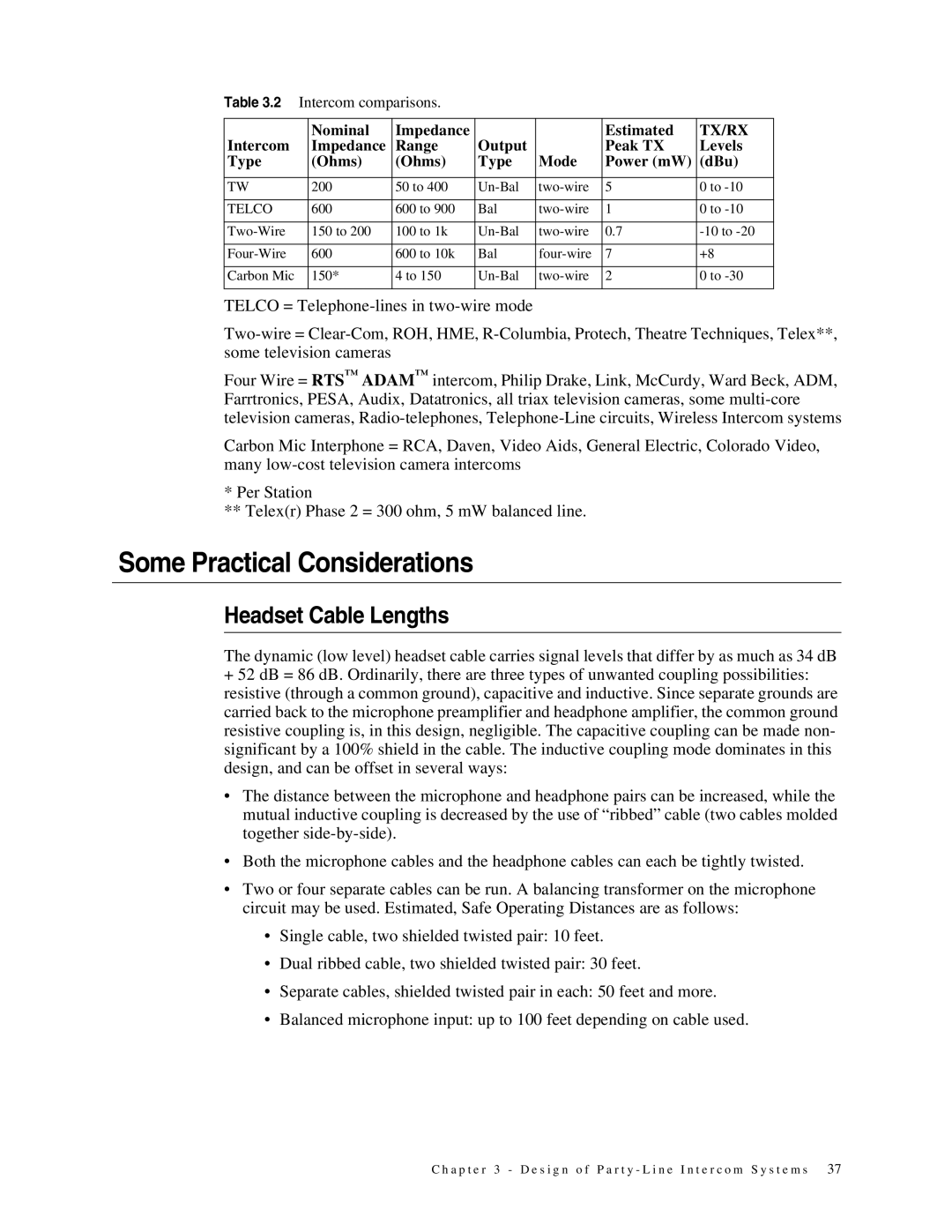Table 3.2 | Intercom comparisons. |
|
|
|
| ||
|
|
|
|
|
|
|
|
|
| Nominal | Impedance |
|
| Estimated | TX/RX |
Intercom |
| Impedance | Range | Output |
| Peak TX | Levels |
Type |
| (Ohms) | (Ohms) | Type | Mode | Power (mW) | (dBu) |
|
|
|
|
|
|
|
|
TW |
| 200 | 50 to 400 | 5 | 0 to | ||
|
|
|
|
|
|
|
|
TELCO |
| 600 | 600 to 900 | Bal | 1 | 0 to | |
|
|
|
|
|
|
|
|
| 150 to 200 | 100 to 1k | 0.7 | ||||
|
|
|
|
|
|
|
|
| 600 | 600 to 10k | Bal | 7 | +8 | ||
|
|
|
|
|
|
|
|
Carbon Mic |
| 150* | 4 to 150 | 2 | 0 to | ||
|
|
|
|
|
|
|
|
TELCO =
Four Wire = RTS™ ADAM™ intercom, Philip Drake, Link, McCurdy, Ward Beck, ADM, Farrtronics, PESA, Audix, Datatronics, all triax television cameras, some
Carbon Mic Interphone = RCA, Daven, Video Aids, General Electric, Colorado Video, many
*Per Station
**Telex(r) Phase 2 = 300 ohm, 5 mW balanced line.
Some Practical Considerations
Headset Cable Lengths
The dynamic (low level) headset cable carries signal levels that differ by as much as 34 dB
+52 dB = 86 dB. Ordinarily, there are three types of unwanted coupling possibilities: resistive (through a common ground), capacitive and inductive. Since separate grounds are carried back to the microphone preamplifier and headphone amplifier, the common ground resistive coupling is, in this design, negligible. The capacitive coupling can be made non- significant by a 100% shield in the cable. The inductive coupling mode dominates in this design, and can be offset in several ways:
•The distance between the microphone and headphone pairs can be increased, while the mutual inductive coupling is decreased by the use of “ribbed” cable (two cables molded together
•Both the microphone cables and the headphone cables can each be tightly twisted.
•Two or four separate cables can be run. A balancing transformer on the microphone circuit may be used. Estimated, Safe Operating Distances are as follows:
•Single cable, two shielded twisted pair: 10 feet.
•Dual ribbed cable, two shielded twisted pair: 30 feet.
•Separate cables, shielded twisted pair in each: 50 feet and more.
•Balanced microphone input: up to 100 feet depending on cable used.
C h a p t e r 3 - D e s i g n o f P a r t y - L i n e I n t e r c o m S y s t e m s 37
